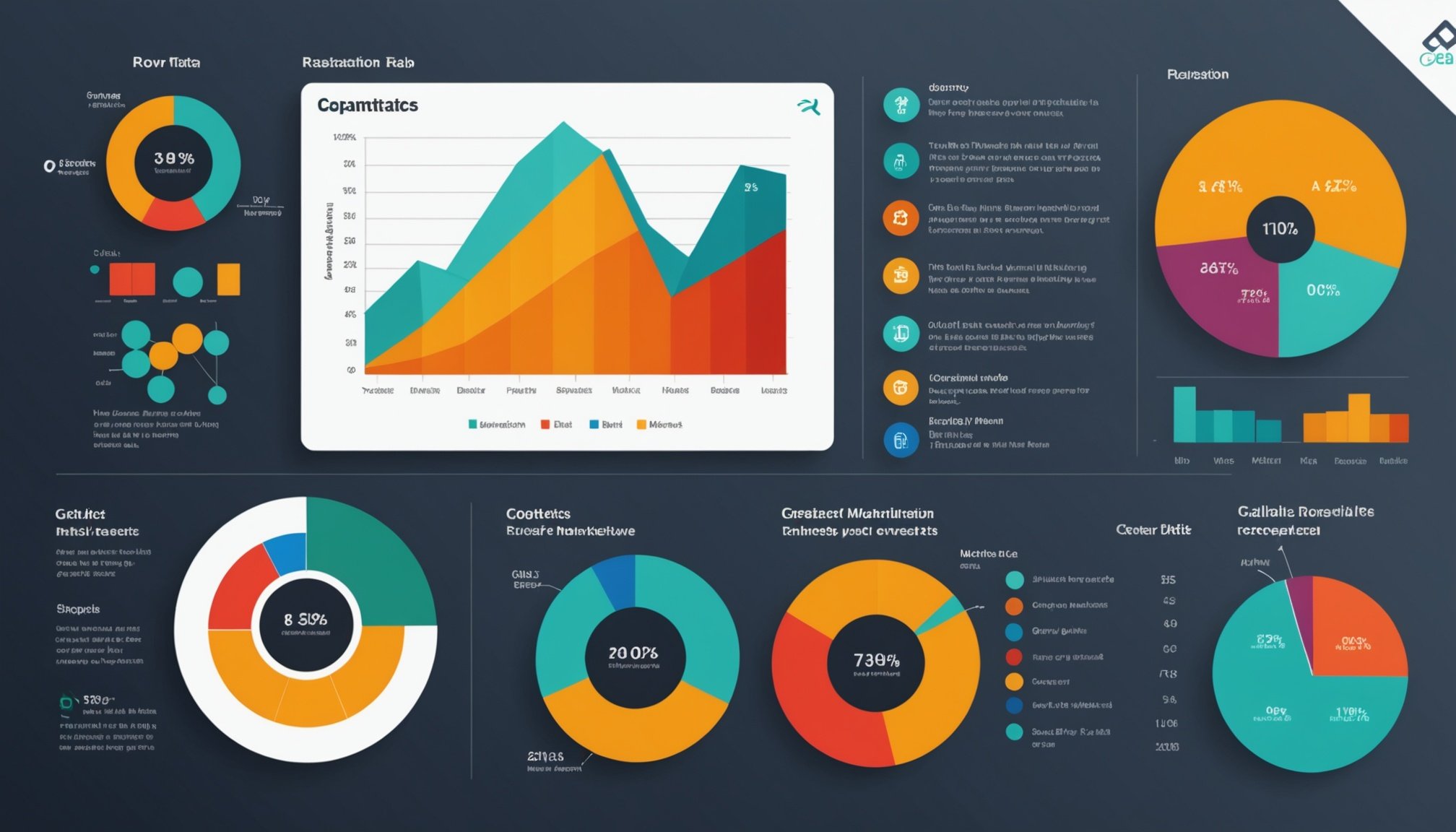Importance of Data Visualization in Marketing Reports
Understanding the importance of data visualization in marketing reports is crucial for enhancing comprehension. When information is conveyed visually, it becomes easier to digest, being translated into formats that highlight trends, patterns, and anomalies clearly. Visual elements impact communication by breaking down complex information into digestible pieces, thus ensuring the message gets across effectively.
In marketing communication, visuals significantly improve the retention of information. Studies indicate that people remember information better when it’s presented visually rather than textually. This makes visual elements impact not only immediate understanding but also long-term recall – a powerful advantage in a competitive market.
Also read : Integrating storytelling into your marketing strategy: a creative approach for brands
The design’s influence on audience engagement cannot be overstated. Marketing communication strategies that incorporate well-designed visuals capture and maintain attention far more effectively than text-heavy reports. Visuals create an engaging narrative, encouraging the audience to interact with the content and process information thoroughly.
Using the right tools, marketers can optimize visual elements to enhance both comprehension and memory retention. Therefore, understanding the data visualization importance deeply impacts how marketing messages are crafted and delivered. As design principles, like color and layout, enhance these visuals, they become more than aesthetic additions; they become vital components of compelling communication strategies.
In the same genre : Crafting a cohesive brand voice: essential strategies for uk businesses
Tools for Data Visualization
Selecting the right data visualization tools can significantly impact the effectiveness of your marketing strategies. Tools like Tableau and Power BI are among the most popular options, each offering unique features tailored to different user needs. Tableau is known for its sophisticated options for creating interactive and shareable dashboards, making it a top choice for those aiming for detailed visual analysis. On the other hand, Power BI integrates seamlessly with other Microsoft tools, offering robust capabilities for users focused on leveraging its existing software integrations.
When comparing these software options, it’s essential to consider factors such as pricing, ease of use, and the level of customer support. For instance, Tableau typically has a steeper learning curve but offers in-depth training resources, while Power BI is often more intuitive for those familiar with Microsoft products.
Features like real-time data updates, customization capabilities, and user-friendly interfaces must also be assessed to match user needs and technical skills. The decision ultimately should centre on finding a tool that complements your workflow, aligns with your technical expertise, and addresses your specific visualization goals. Tailoring your tool choice ensures that you maximize potential and foster a deeper connection between your data and actionable insights.
Best Practices for Creating Effective Visuals
Developing effective visuals requires an understanding of design principles that enhance communication. A key practice is implementing visual hierarchy and layout. This involves organizing elements in a way that guides the viewer’s attention, using size, color, and spacing to highlight the most critical data points first. By crafting a clear visual path, you facilitate comprehension and engagement.
Choosing the right type of chart is another cornerstone of data visualization best practices. Opt for bar charts to compare different categories, line graphs for continuous data trends, and pie charts for illustrating proportions. It’s crucial to align the chart choice with the nature of the data to avoid misrepresentations and ensure clarity.
Integrating colors and fonts strategically enhances both clarity and emphasis. Utilize contrasting colors to delineate sections clearly, ensuring that all elements remain distinct and legible. Similarly, select fonts that are readable across various devices and formats. Proper color choices and font selections not only make the visuals aesthetically pleasing but also functionally effective, allowing your message to resonate with the audience. By employing these design principles, you can create visuals that are not only visually appealing but also impactful and informative.
Resources and Templates for Data Visualization
To create stunning and impactful presentations, it’s vital to utilize the right data visualization resources and templates. These aids not only streamline the design process but also guide users in crafting visuals that effectively convey complex data. Many online platforms offer dynamic templates tailored to showcasing specific types of data. These resources equip both beginners and advanced users alike with the tools necessary to design with precision and clarity.
For novices stepping into the world of data visualization, step-by-step instructional guides are invaluable. Such guides provide detailed instructions on employing diverse tools and techniques, helping to build confidence and skill. Beginners can explore user-friendly resources that highlight the basics of creating visuals, from simple charts to intricate infographics.
On the other hand, advanced users benefit from additional reading options and specialized courses that delve deeper into sophisticated techniques. These resources expand expertise and inspire innovative uses of templates in marketing strategies. As users become more adept, they can exploit more nuanced aspects of design to elevate marketing communication effectively. Embracing these educational tools fosters an environment of continuous learning and cultivates expertise in producing captivating data-driven narratives.
Case Studies: Successful Data Visualization
Examining real-world data visualization case studies reveals strategies that significantly enhance marketing impact.
Company A: Increased Engagement Through Infographics
Company A leveraged visually appealing infographics, transforming marketing communication. By presenting complex data within engaging visuals, the company boosted user interaction and retention. Infographics create straightforward narratives that audiences find relatable and memorable, playing a crucial role in this success story.
Company B: Enhanced Clarity with Dashboards
Company B employed dashboards to improve data visualization importance in decision-making. Customizable and interactive dashboards allowed for real-time insights, significantly speeding up the process of drawing valuable conclusions. This adaptability to user needs increased efficiency, marking their success in marketing.
Company C: Storytelling Techniques Leading to Conversion
Company C’s innovative storytelling approach employed trends and patterns within their visuals, which captivated their target audience. Visual elements impact storytelling enormously, giving life to data. This method directly influenced conversions by seamlessly conveying the brand’s message with clarity.
These examples illustrate the practical application and advantages of integrating visual elements impact within marketing strategies. Successful outcomes showcase how visuals can lead to measurable improvements in engagement, clarity, and conversion. Marketers can draw inspiration and adopt these strategies to develop impactful communications and resonate with their audience.
Designing Impactful Presentations
In marketing, crafting impactful presentations is essential for effectively conveying complex information and sustaining audience interest. By skilfully structuring your presentation, you can ensure that visuals take centre stage, captivating viewers and enhancing communication. This begins with meticulously organizing content to emphasize key data points while avoiding overwhelming your audience with excessive text.
Visual storytelling is a powerful design technique that engages the audience by weaving data into a compelling narrative. By illustrating data trends through relatable scenarios, marketers can evoke emotions and foster a deeper connection with the content. Integrating charts, infographics, and other visual elements strategically keeps the presentation dynamic and intriguing.
Moreover, incorporating multimedia elements like videos or animations can significantly enhance audience engagement. These components breathe life into presentations, making them more interactive and memorable. Remember to balance these multimedia features so they complement and emphasize the primary message rather than distract.
Overall, using these design techniques thoughtfully ensures your presentation resonates and leaves a lasting impact. By focusing on structured visual content and audience-centred storytelling, you can captivate your audience and drive home your marketing message effectively.











